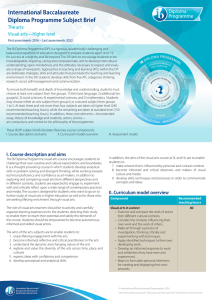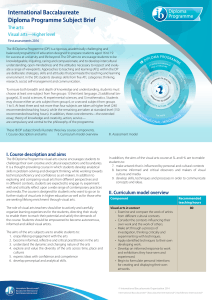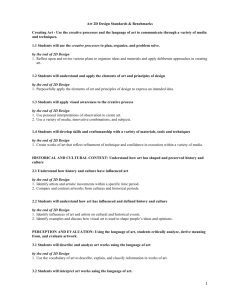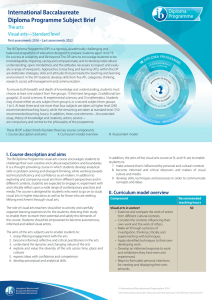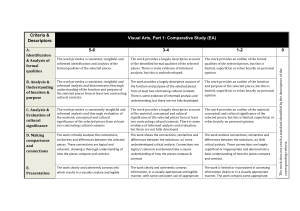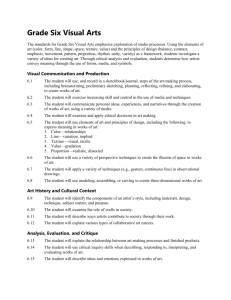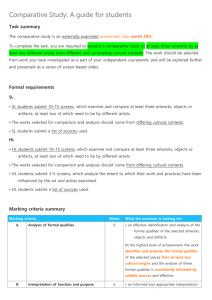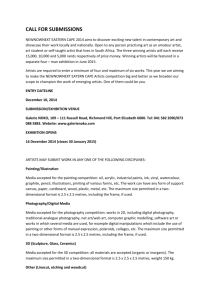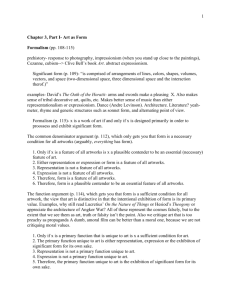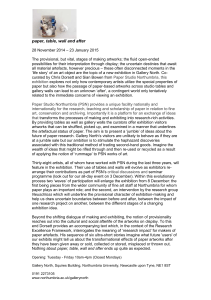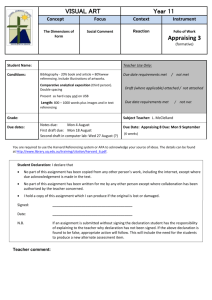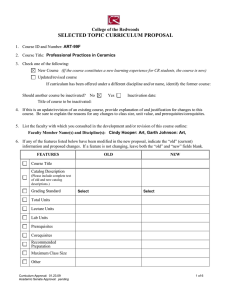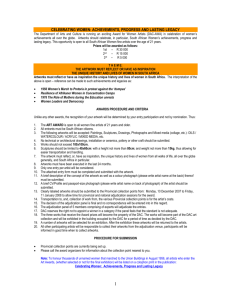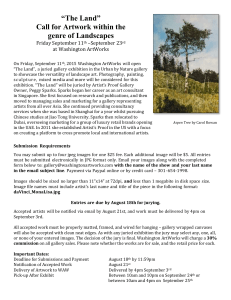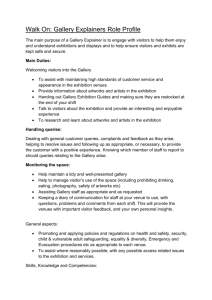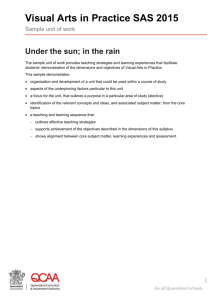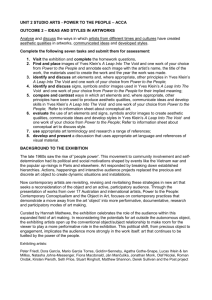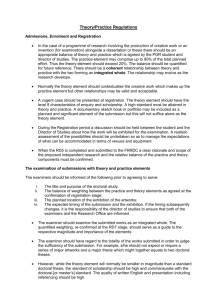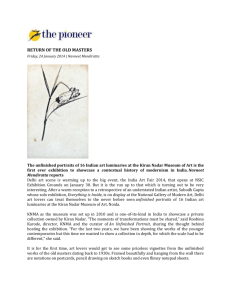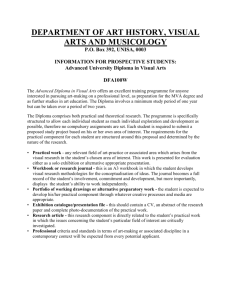HL course at a glance
advertisement
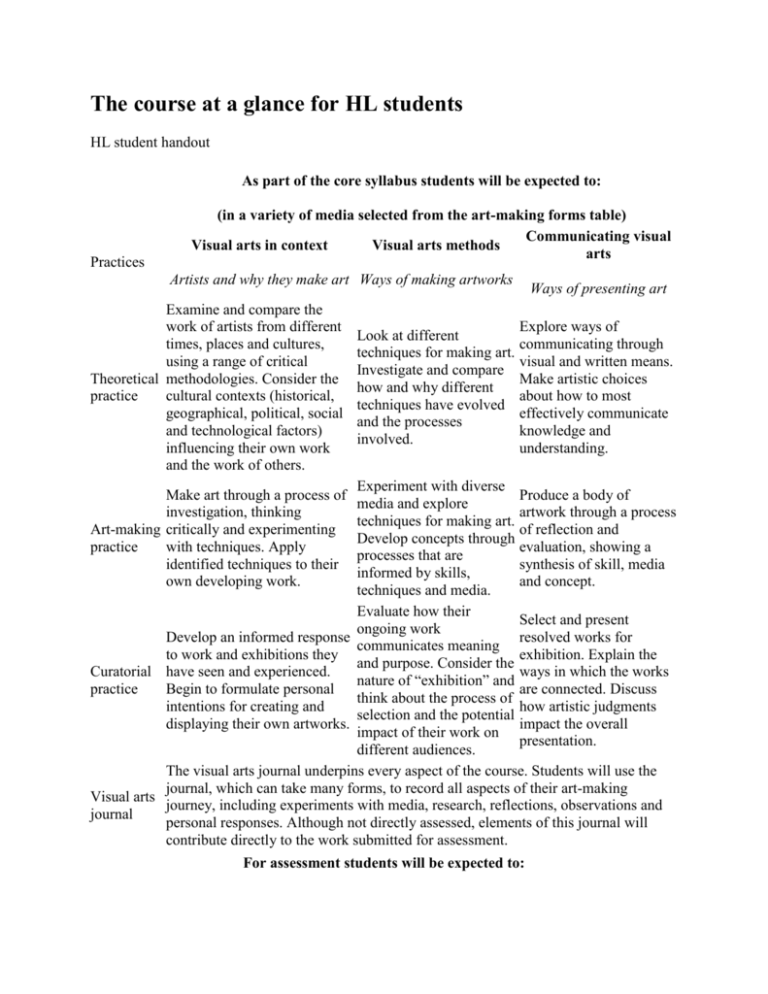
The course at a glance for HL students HL student handout As part of the core syllabus students will be expected to: Practices (in a variety of media selected from the art-making forms table) Communicating visual Visual arts in context Visual arts methods arts Artists and why they make art Ways of making artworks Examine and compare the work of artists from different times, places and cultures, using a range of critical Theoretical methodologies. Consider the practice cultural contexts (historical, geographical, political, social and technological factors) influencing their own work and the work of others. Ways of presenting art Explore ways of Look at different communicating through techniques for making art. visual and written means. Investigate and compare Make artistic choices how and why different about how to most techniques have evolved effectively communicate and the processes knowledge and involved. understanding. Experiment with diverse Produce a body of media and explore artwork through a process techniques for making art. of reflection and Develop concepts through evaluation, showing a processes that are synthesis of skill, media informed by skills, and concept. techniques and media. Evaluate how their Select and present ongoing work Develop an informed response resolved works for communicates meaning to work and exhibitions they exhibition. Explain the and purpose. Consider the Curatorial have seen and experienced. ways in which the works nature of “exhibition” and practice Begin to formulate personal are connected. Discuss think about the process of intentions for creating and how artistic judgments selection and the potential displaying their own artworks. impact the overall impact of their work on presentation. different audiences. The visual arts journal underpins every aspect of the course. Students will use the journal, which can take many forms, to record all aspects of their art-making Visual arts journey, including experiments with media, research, reflections, observations and journal personal responses. Although not directly assessed, elements of this journal will contribute directly to the work submitted for assessment. Make art through a process of investigation, thinking Art-making critically and experimenting practice with techniques. Apply identified techniques to their own developing work. For assessment students will be expected to: (in a variety of media selected from the art-making forms table) Combining all they have learned from visual arts in context, visual External/Internal HL arts methods and communicating visual arts core syllabus areas Comparative study: Students analyse and compare different artworks by different artists. This independent critical and contextual investigation explores artworks, objects and artifacts from differing cultural contexts. Students compare at least 3 different artworks, by at External 20% least 2 different artists, with commentary over 10–15 screens. Students also submit a reflection on the extent to which their work and practices have been influenced by any of the art/artists examined (3–5 screens). Process portfolio: Students submit carefully selected materials, which evidence their experimentation, exploration, manipulation and refinement of a variety of visual arts activities during the two-year External 40% course. Students submit 13–25 screens. The submitted work should be in at least three different art-making forms. Exhibition: Students submit for assessment a selection of resolved artworks from their exhibition. The selected pieces should show evidence of their technical accomplishment during the visual arts course and an understanding of the use of materials, ideas and practices Internal 40% appropriate to visual communication. Students submit 8–11 pieces with exhibition text for each, along with a curatorial rationale (700 words maximum). HL students should, as a minimum, experience working with at least three art-making forms, selected from a minimum of two columns of the table below: Two-dimensional forms Three-dimensional forms Drawing: such as charcoal, pencil, ink Painting: such as acrylic, oil, watercolour Printmaking: such as relief, intaglio, planographic, chine collé Graphics: such as illustration and design Sculpture: such as ceramics, found objects, wood, assemblage Designed objects: such as fashion, architectural, vessels Site specific/ephemeral: such as land art, installation, mural Textiles: such as fibre, weaving, printed fabric Lens-based, electronic and screen-based forms Time-based and sequential art: such as animation, graphic novel, storyboard Lens media: such as still, moving, montage Digital/screen based: such as vector graphics, software generated

